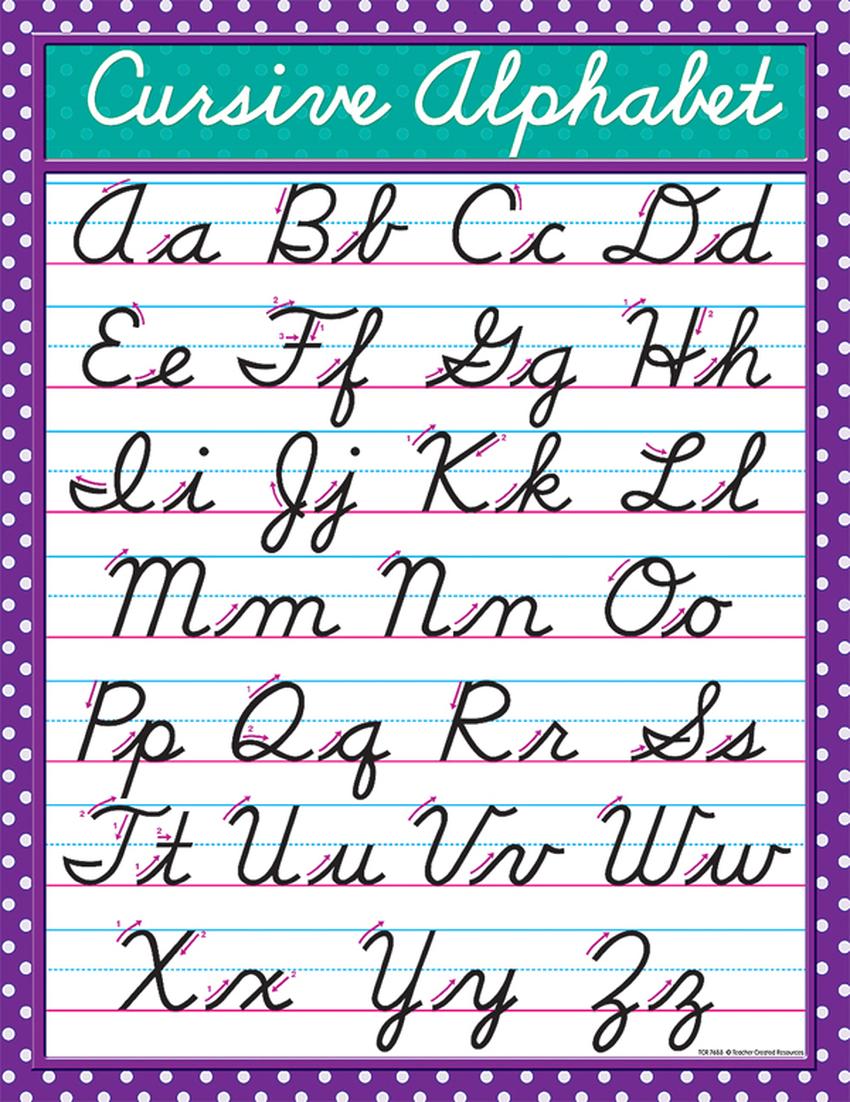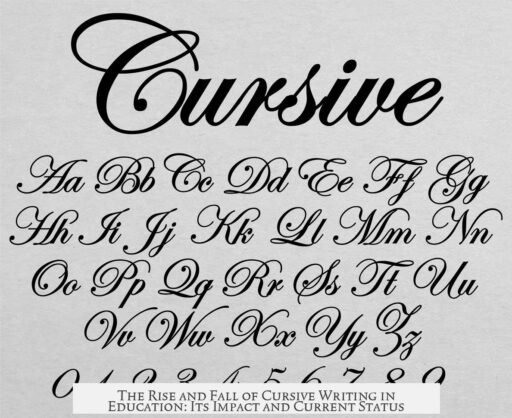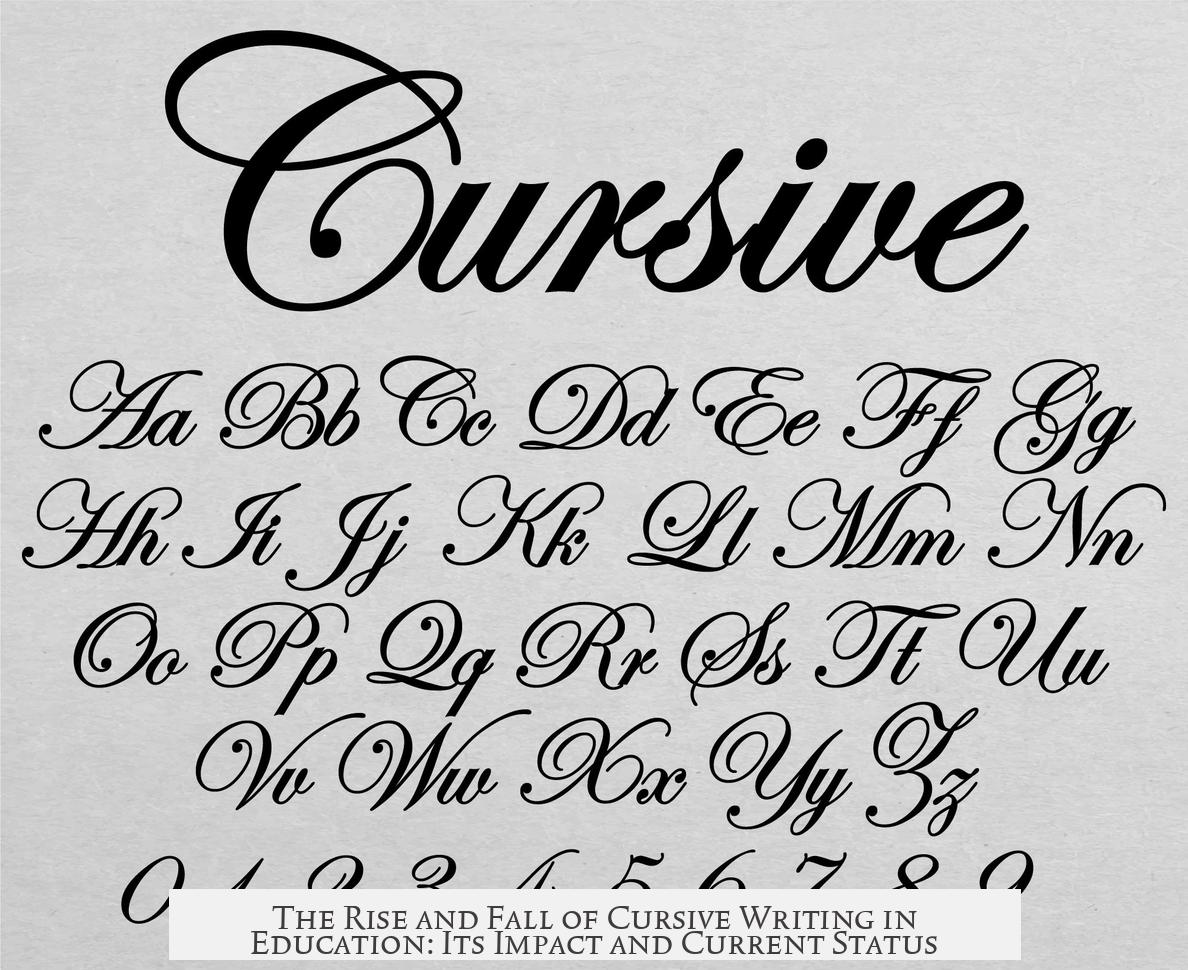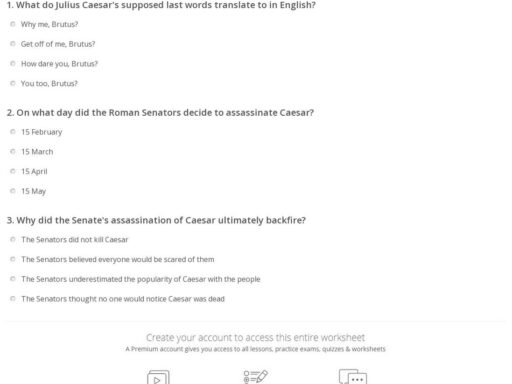Cursive writing became mandatory in education as it was the default writing style when formal schooling began. It matched societal needs for literacy beyond just reading, emphasizing writing and speaking as essential skills for an educated population. Later, it vanished from curriculums due to shifts in educational priorities, advancements in technology, and practical considerations favoring simpler handwriting methods.
The origin of cursive’s mandatory status traces to early schooling systems where fine motor control was expected and encouraged. Cursive was seen as the “original” way to write words smoothly and efficiently. Education became compulsory around the time cursive was already established as the standard, ensuring that all children learned this style. This is because society valued the ability to not only read but also write fluently by hand, primarily for communication and record-keeping.
During the mid-1800s, public education expanded significantly as governments recognized its importance for democracy and social stability. Literacy was no longer a privilege. It included listening, speaking, reading, and writing. Cursive fit into this framework as an advanced skill for permanent documentation and personal expression. It required a level of dexterity that was seen as essential for a fully literate citizen.
However, by the mid-20th century, the educational landscape began to change. One major turning point was after the launch of Sputnik in 1957. This event shifted curriculum focus towards math and science to compete globally in technology and innovation. Schools responded by reallocating instructional time. Subjects considered less urgent, like handwriting styles, suffered cuts. Cursive, taught typically in grades 3 to 5, became marginalized within overall education priorities.
The rise of manuscript handwriting contributed significantly to cursive’s decline. Manuscript — simple printing with separate letters — emerged as easier for young learners. Educators reasoned that teaching two forms of writing, cursive and manuscript, was inefficient. Manuscript required less fine motor skill and proved faster to teach and learn, especially for very young children. This method allowed four- and five-year-olds to write simultaneously while developing reading skills.
Technological advancements further accelerated the decline of cursive. Typing instruction appeared in schools during the 1970s and 1980s and expanded into dedicated keyboarding classes by the 1990s. Computers and digital communication lessened the necessity for cursive handwriting in both personal and professional settings. Students used keyboards more often to record and share ideas, making cursive less relevant.
Educational systems have limited time and must adapt to societal needs. As technology evolved, the goal shifted to teaching skills with the broadest practical use. Capturing thoughts quickly and efficiently became paramount, often best served by typing or simpler manuscript handwriting. Cursive, with its complexity and longer learning curve, became a lower priority. Many schools dropped it from the curriculum or made it optional.
Historically, cursive’s stronghold was challenged by the early 20th-century rise of a child-friendly manuscript system. Edward Johnston advocated for teaching children a modern, accessible handwriting style that suited their developmental stage. This approach spread widely by the 1930s. It allowed educators to introduce literacy skills younger, not waiting for refined motor skills before starting writing instruction.
| Factor | Why Cursive Was Mandatory | Why Cursive Declined |
|---|---|---|
| Historical Context | Default writing style when schools began; societal need for literacy. | Educational priorities shifted toward tech, math, and science. |
| Writing Complexity | Required fine motor skill; seen as advanced skill. | Manuscript easier for young children; faster to teach. |
| Technological Impact | Not applicable; no competing tech. | Typing and keyboarding reduced necessity. |
| Curriculum Demands | Integral part of literacy education. | Less time for non-essential skills. |
The evolution of handwriting instruction reveals a balance between tradition and practicality. Initially, cursive served a vital role in developing literacy systems for an emerging educated citizenry. Later, its complexity and slower learning process made it less feasible within crowded curricula. Technological tools reshaped how writing skills are used, influencing what schools prioritize.
Educators now focus on skills offering the most immediate benefit and utility, such as typing. Cursive is no longer mandatory in many places but sometimes still taught as a cultural or stylistic element. Its presence varies widely depending on district, region, and educational philosophy. The trend clearly favors simplicity, efficiency, and alignment with digital communication.
- Cursive was once the default handwriting taught because schools required advanced, fluent writing for literacy.
- Public education expanded literacy to writing and speaking, reinforcing cursive’s importance.
- Curriculum shifted after Sputnik with more emphasis on math and science, reducing cursive instruction.
- Manuscript handwriting emerged as simpler, quicker to teach, and suitable for younger children.
- Technology, especially typing, diminished the practical necessity of cursive.
- Schools have limited time and prioritize skills aligned with modern communication and learning needs.
- Cursive remains optional or regional but is no longer a widespread mandatory skill.
Why did Cursive Writing become such a mandatory thing in education, and then why has it vanished from the curriculum?

Simply put, cursive writing became mandatory because it was the natural, default way of writing when schools first standardized education, but it’s vanished because our educational priorities and technologies shifted to faster, easier methods. Now, let’s dive deeper and see why cursive ever mattered — and why it faded into history.
To understand cursive, we have to rewind to early American education. Until the mid-1800s, reading and writing were like distant cousins, not best friends. Reading was the “inhale” — absorbing information — while writing was the “exhale,” used mainly for communication but often less emphasized. People could read the Bible or legal texts, but many never learned to write. Writing was a skill reserved for those who had a need, like merchants or officials.
In those days, the social rules around teaching reading and writing were unusual. Women taught boys to read, but only men could teach handwriting, which also included the mystic art of making pens. Writing wasn’t just scribbles — each person’s handwriting, or “hand,” varied wildly, shaped by social class and family origin. There wasn’t any standard alphabet style.
This disjointed landscape made things tricky. Because writing was less common, *cursive* became the original default when public education emerged in the mid-1800s. Think of cursive as the elegant elder sibling to modern handwriting. It was a flowing style that connected letters, allowing for faster, continuous writing.
However, writing in cursive wasn’t easy. It demanded fine motor skills that young children hadn’t developed yet. This posed an educational challenge. But by the mid-19th century, public education meant more than just reading — it meant every child had to learn to write too, in preparation for life as voters and participants in democracy. Cursive was the *mandatory* style because it was considered proper and standard.
Fast forward to the early 20th century, when a refreshing innovation arrived. Edward Johnston, an English calligraphy expert, promoted a new idea: teaching children a simpler, child-friendly handwriting style called manuscript, or block letters — what we see today as printed letters. By the 1930s, this manuscript approach had spread widely.
Why this switch? Because learning manuscript lets kids start earlier. Four and five-year-olds could grasp basic shapes, like circles and lines, using just a firm grip on the pencil without complex wrist maneuvers. It’s like learning to walk before running — easier to master early.
This innovation wasn’t a rebellion against cursive but an accommodation to children’s development. Now, young kids could learn reading and writing at the same time, without waiting for their motor skills to mature. This was a practical win in classrooms everywhere.
But then the tide began shifting. After the launch of Sputnik in 1957, the U.S. education system felt pressure to beef up math and science education to compete globally. This push squeezed out many “non-essential” subjects. Think about it: when school days are short and loaded with new priorities, what’s the fate of elegant cursive loops?
Another practical consideration was efficiency. Teaching children to master two handwriting styles — manuscript and cursive — became seen as redundant. Manuscript was faster to teach, easier for small hands, and satisfactory for everyday communication.
Then came the tech wave. By the 1970s and 80s, typing skills entered classrooms. Suddenly, young students were tapping away on keyboards as much as scribbling in their notebooks. Keyboarding classes gave prominence to typing over handwriting. The usefulness of cursive came into question. Why spend hours tied to pen and paper when digital tools could do the job faster?
Schools had to make tough calls. The goal of writing is to record thoughts clearly and permanently. But curricula have limited hours and many demands. The focus shifted towards skills that prepared students for a modern, tech-driven world: typing, digital literacy, and STEM subjects. Cursive slipped quietly from the spotlight.
What about today? Is cursive dead for good?
Cursive isn’t entirely extinct. Some educators and psychologists argue that cursive has benefits: it can improve fine motor skills, reinforce reading and spelling, and even help with cognitive development. It builds a bridge between the physical act of writing and the brain’s processing. Plus, *signatures* still matter legally.
Yet, cursive is mostly optional now. Some schools teach it as a specialty or elective. Others omit it entirely. The choice reflects our changing times and priorities.
So, what’s the takeaway for parents, educators, or curious readers?
- Cursive writing was mandatory because it was the original, efficient way to write and communicate before printing styles or typing existed.
- Its decline results from evolving educational needs, child development research, and technological progress that favors speed and accessibility.
- While cursive remains valuable for some skills and traditions, education now focuses on what best equips students for modern challenges.
- If you want to learn or teach cursive, no one’s stopping you — but it’s no longer a school day must-have.
Is cursive a lost art? Maybe. But like vinyl records and handwritten postcards, it holds a special place as a nod to the hands of history that shaped literacy. Schools prioritize different skills now, and that’s okay — education evolves, just like writing did long ago.
In the end, cursive reminds us of where communication started and how it changes. Are you curious to try writing in cursive? Grab a pen and see if those loops and swirls unlock a new way to think — or just make a nice signature.




